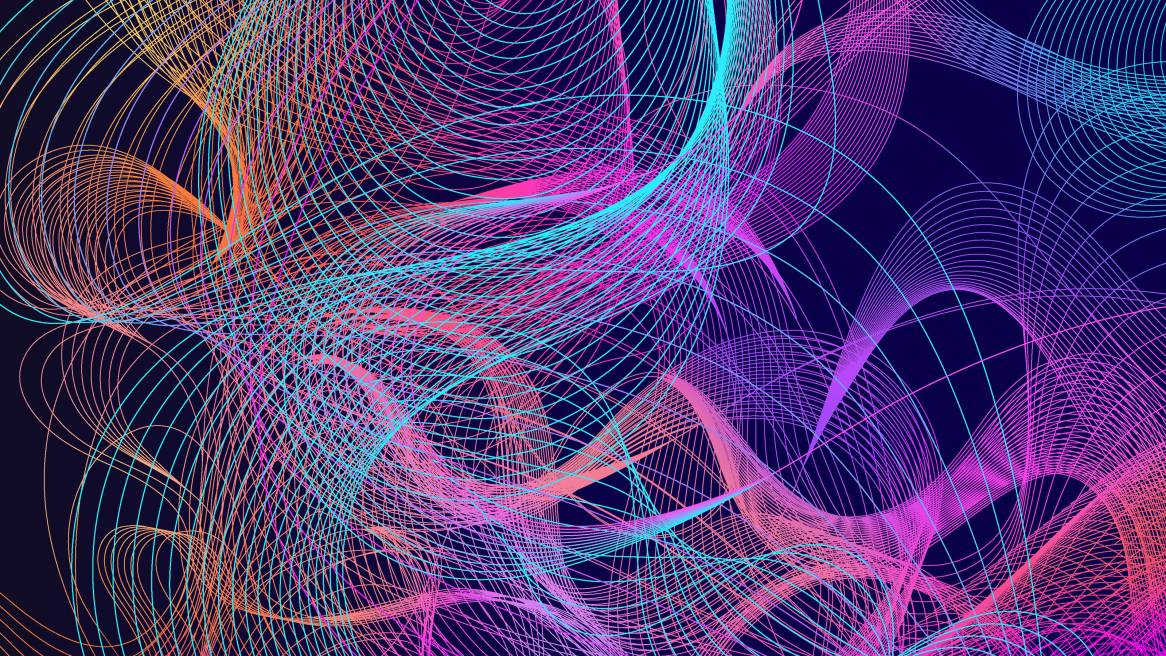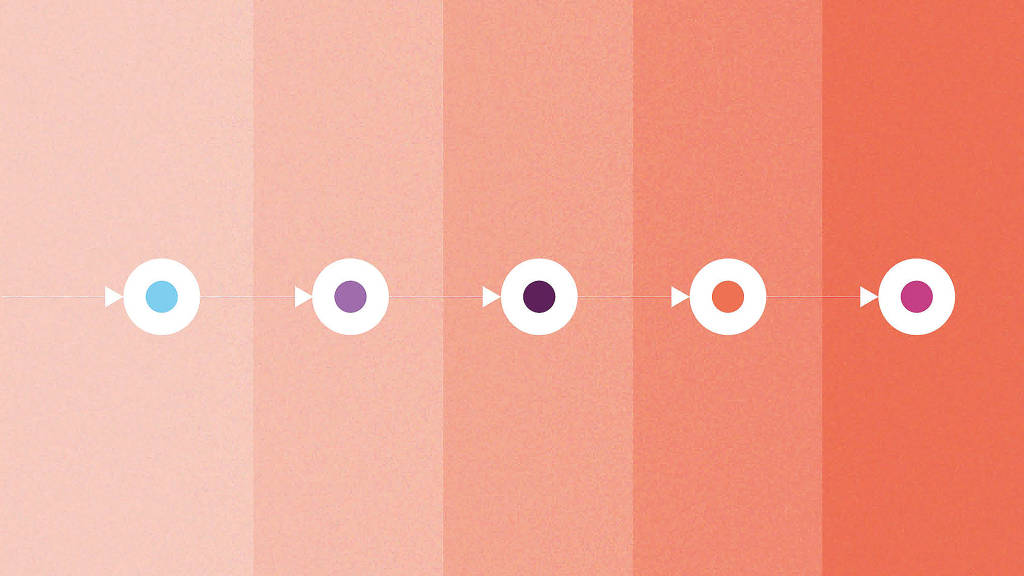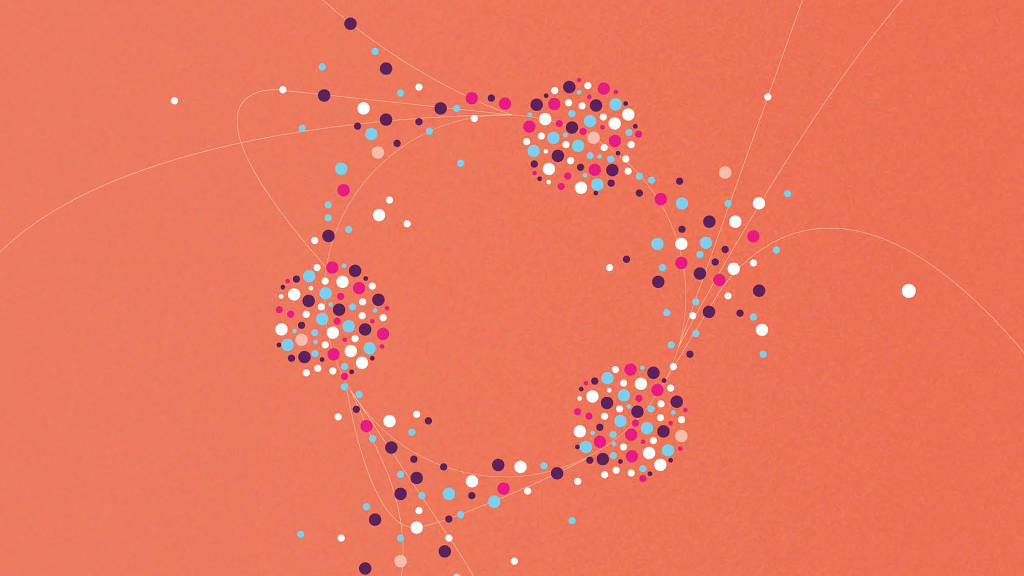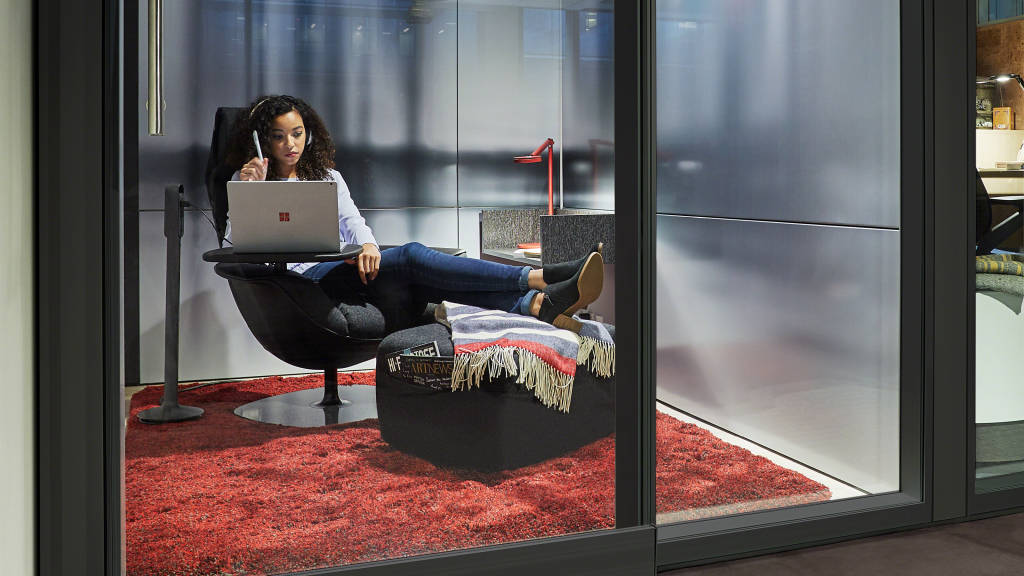The Creative Shift
How Place + Technology + People Can Help Solve 21st Century Problems
“Ideas are the currency of the new economy.”
That quote came from Richard Florida, an economist and social scientist who authored The Rise of the Creative Class… over fifteen years ago in 2002.
Florida argued that creative work is not exclusively about artistic pursuits but rather a focus on generating new ideas and solving complex problems. He maintained that creativity was a critical skill for people to develop and for cities and businesses to foster if they wanted to thrive in the coming century. It was an idea that took time to build momentum.
Design thinking, the notion of using the same creative strategies designers employ to solve problems, was gaining traction around the same time. Ideas about creative work generated plenty of conversation – and Florida’s work spawned its share of debate— business leaders weren’t losing a lot of sleep over the creative output of their organization. They were far more focused on efficiency, getting lean and going global.
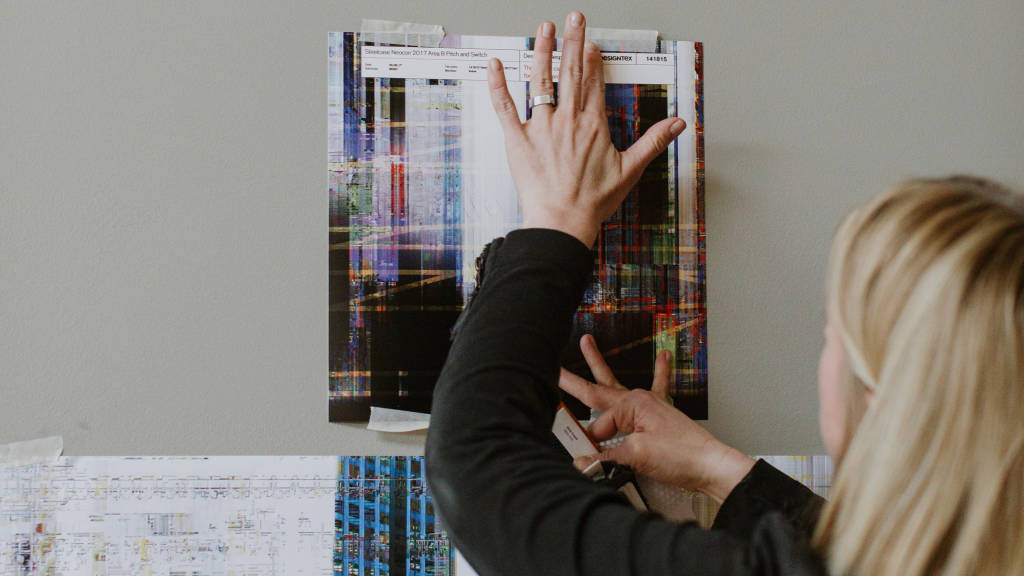
Fast forward to today and creativity is an idea whose time has come, on multiple fronts. Cities around the world that fostered great environments for creative work have thrived, as Florida suggested. People who lived through the cost squeeze of multiple recessions are looking for a deeper sense of meaning and purpose from their work, and stretching their creative muscles helps scratch that itch. Meanwhile, recent college graduates aren’t content to sit in a beige cubicle and do routine work just to make a paycheck, causing employers to rethink their strategies for attracting new talent.
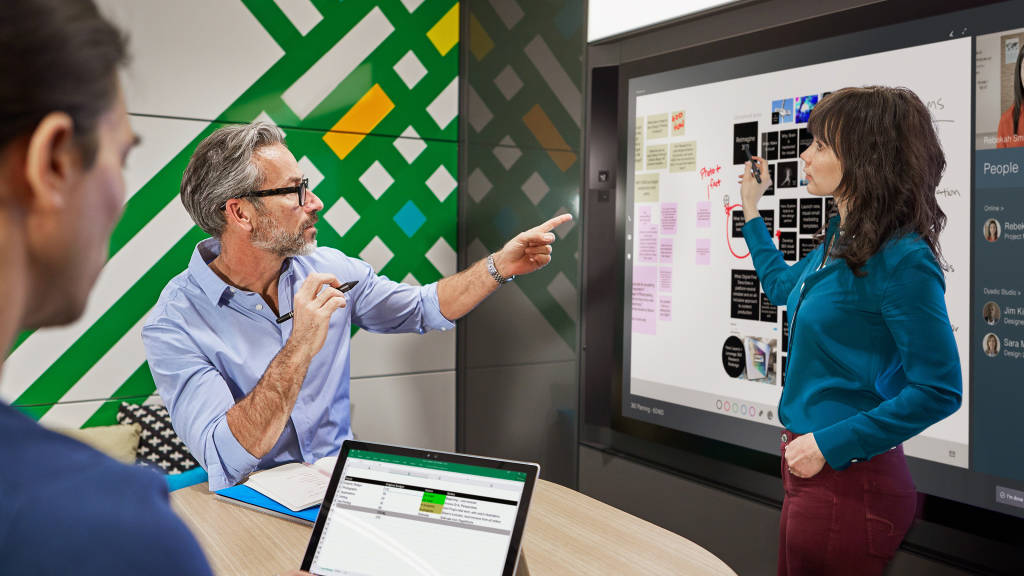
At the same time, emerging technologies have grown so exponentially that they’ve ushered in “The Fourth Industrial Revolution,” according to Klaus Schwab, founder of World Economic Forum. “We stand on the brink of a technological revolution that will fundamentally alter the way we live, work and relate to one another,” he states. “In its scale, scope, and complexity, the transformation will be unlike anything humankind has experienced before.” Faced with these kinds of advances –which offer opportunities as well as stiff competition and disrupted markets – businesses realize that they can’t cost cut their way to growth. They need to refocus innovation. And it’s this drive for innovation, in increasingly complex conditions, that is causing a macro shift toward more creative work.
“Creativity isn’t a linear process. It’s not even a predictable process. It has a rhythm of different activities and requires both convergent and divergent thinking.”
James LudwigVice President, Global Design, Steelcase
Understanding Creativity
In many organizations, however, creativity isn’t bubbling up spontaneously. Most employers say their organizations aren’t creative enough and most employees say they’re not living up to their creative potential on the job, according to Adobe’s State of Create 2016 study. Contrary to popular myth, creativity isn’t about a “Eureka!” moment that happens among truly brilliant people. Creative work is a process in which everyone can engage, if the conditions are right.
Steelcase and Microsoft joined forces to begin thinking about the challenges organizations and people face as they try to engage in more creative work. Understanding that both space and technology have a role to play in supporting this work, it was critical to begin with insights on how creativity happens.
“Creativity isn’t a linear process. It’s not even a predictable process,” according to James Ludwig, head of global design and product engineering at Steelcase. “It has a rhythm of different activities and requires both convergent and divergent thinking, with people coming together in small or large groups, and moving apart to do work alone.”
“Creativity is an inclusive process in which something new emerges,” says Ralf Groene, general manager of Microsoft Devices. “As creativity becomes central to our work, the importance of where we do it is being reaffirmed. The cloud and mobile technologies may be untethering us from the office, but our need and desire to do creative work is luring us back in.”
Yet, despite the desire to be more creative at work, the majority of people don’t believe they’re living up to their creative potential. The solution is finding the right balance between convergent and divergent thinking, and having the right range of spaces and technology to support all the diverse stages of creative work. In a recent Steelcase and Microsoft study, people reported the things that would help them be more creative are to have more time to think and time to be alone without disruptions.
“The way to support people is to provide the ability to move between individual time and collaborative time, having that rhythm between coming together to think about a problem and then going away and let those ideas gestate,” says Donna Flynn,vice president of WorkSpace Futures at Steelcase.
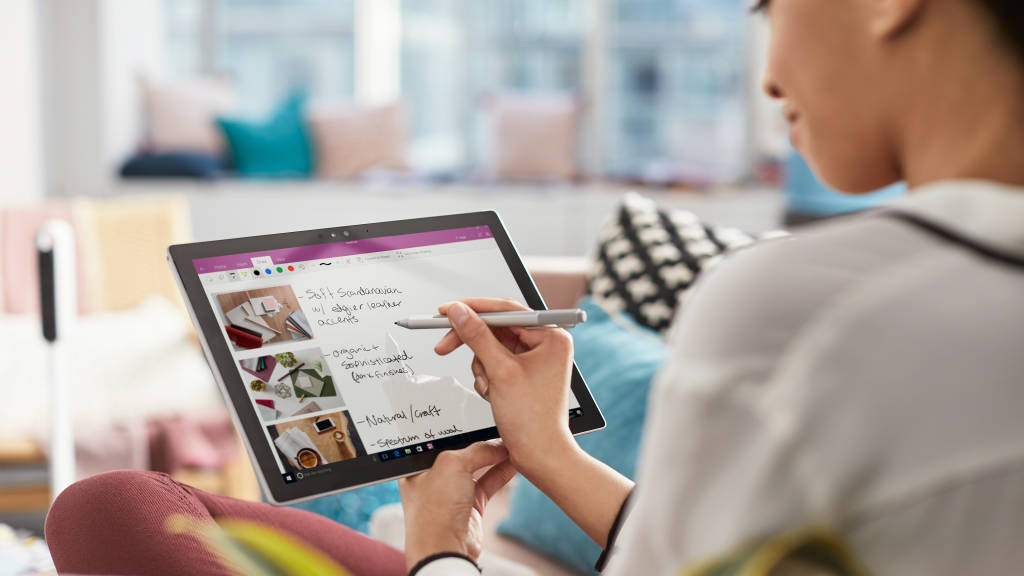
The collaborative side of creative work is not without its challenges either, despite the investments organizations are making in group work spaces. The vast majority of leaders feel they’re providing the right kinds of spaces for group collaboration, but only 25 percent of respondents in the Steelcase/Microsoft study said their spaces for groups and teams are good places for creative work.
“We’ve come to realize there’s so much value in people coming together,” notes Groene. “We’re no longer coming to work because that’s where your files and phone and computer are, or because it’s the only place where your laptop connects to the corporate network. Now we’re coming to work because it’s where we share, collaborate and build on each other’s ideas. That makes supporting the modes of thinking, communicating and creating a super relevant task.”
Creativity is fundamentally about problem solving. This means it’s difficult, iterative and messy – an often nebulous exploration of unknowns. It also means creative work is intensely demanding – physically, cognitively and emotionally. Just one type of solution can’t support the range of people’s needs.
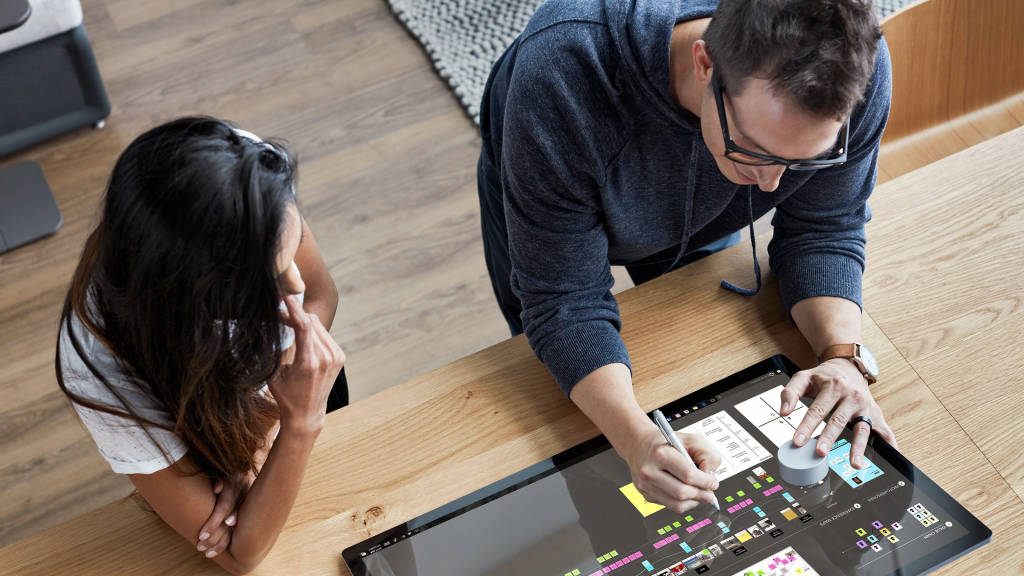
“We’re starting to see movement away from the traditional corporate office toward workplaces that are more like creative studios—a plurality of spaces, each designed to support people and the technologies that can make their work easier.”
James LudwigVice President, Global Design, Steelcase
Creating the Conditions for Creativity at Work
Steelcase and Microsoft are collaborating to explore how the workplace can more successfully drive creative performance. Accelerating creativity, they say, starts with understanding the behaviors and modes of creative work, and then envisioning how place and technology can help.
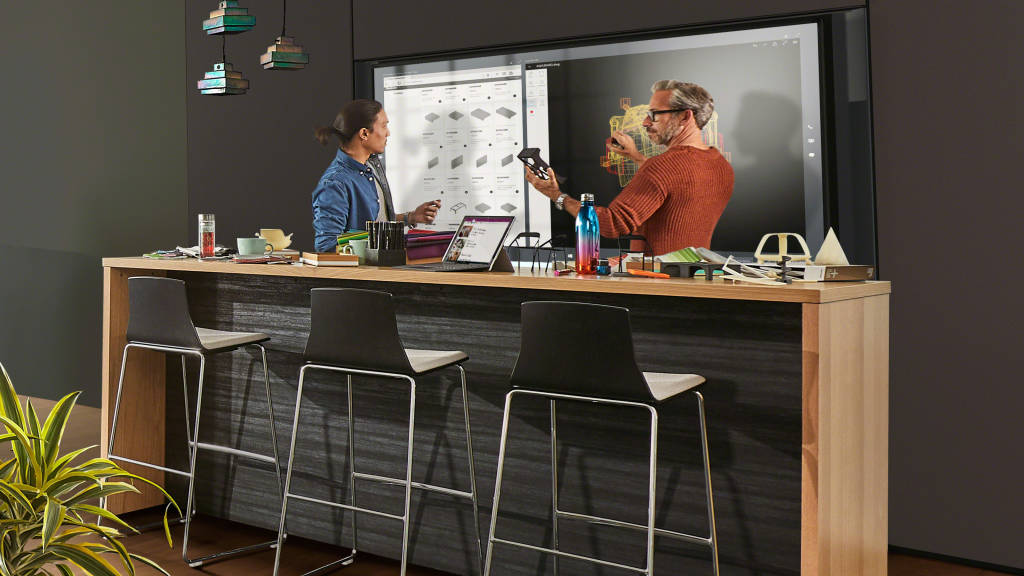
“It’s really all about the intersection of the digital and the physical – having the right place and the right technology at the right time,” says Ludwig. “That’s why we’re starting to see movement away from the traditional corporate office toward workplaces that are more like creative studios —a plurality of spaces, each designed to support people and the technologies that can make their work easier.”
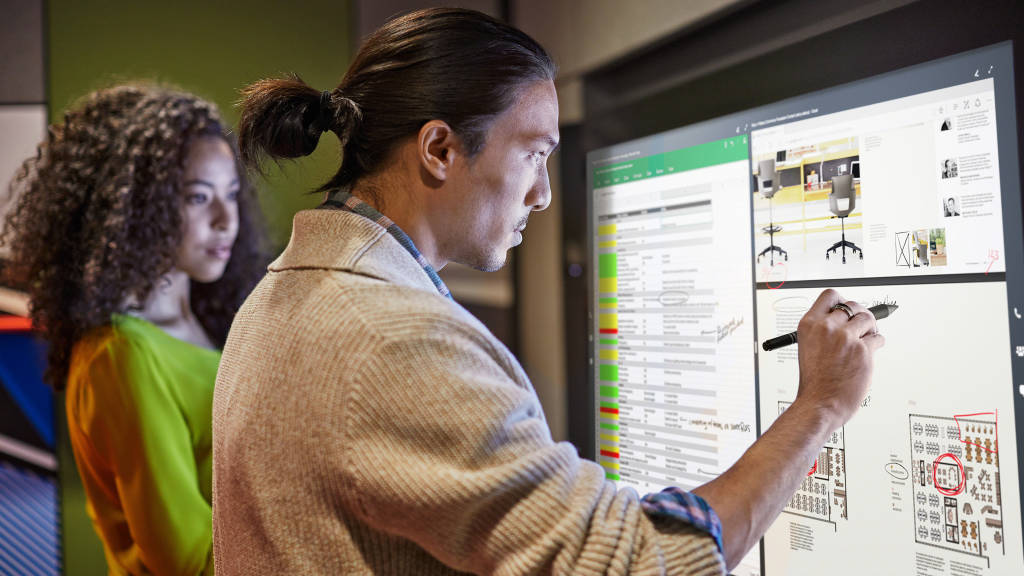
“Traditionally, technology has not always been leveraged during the early stages of the creative process,” says Groene. This can put people and teams at a disadvantage. Something arises in our heads. It’s usually incomplete and we jot it down, find a whiteboard and pull in colleagues. Computers usually came in at later stages. But now technology can be a tool to amplify our thinking throughout the entire process. We can take our content with us wherever we want to work. It will always be there, with the right security and the speed of light,” he explains.
The Creative Spaces Ecosystem
To help organizations accelerate the shift toward more creative work, Steelcase and Microsoft co-developed Creative Spaces, an interdependent ecosystem of spaces and technologies designed for the diverse modes of creative work, such as uninterrupted individual focus, developing ideas in a pair, generating solutions as a group, converging around ideas and allowing time for diffused thinking – allowing the mind to wander. They are places that build trust, inspire new ways of thinking and fuel experimentation. This initial collection of thoughtfully curated destinations bring together design and materiality without compromising performance to enable creative work.
“The future will be powered by ideas,” says Ludwig. “How we create, identify, foster and make ideas tangible – that’s how value is created. Our spaces and technologies need to help us solve problems, not cause friction or get in the way. When space and technologies come together to really support people’s work and really support their wellbeing — then we’re removing the drag on their experiences. They can naturally be centered on ideas instead of what’s not working for them. And, as a result, ideas will flow through the organization faster.”
The Creative Spaces Ecosystem
People + Place + Technology
To help organizations accelerate the shift toward more creative work, Steelcase and Microsoft co-developed Creative Spaces, an interdependent ecosystem of spaces and technologies designed for the diverse modes of creative work.
These spaces deliver key spatial attributes that address:
Privacy: acoustic, visual, territorial and psychological
Posture: seated, standing, lounging and perching
Proximity: people-to-people, people-to-tools + technology
Maker Commons
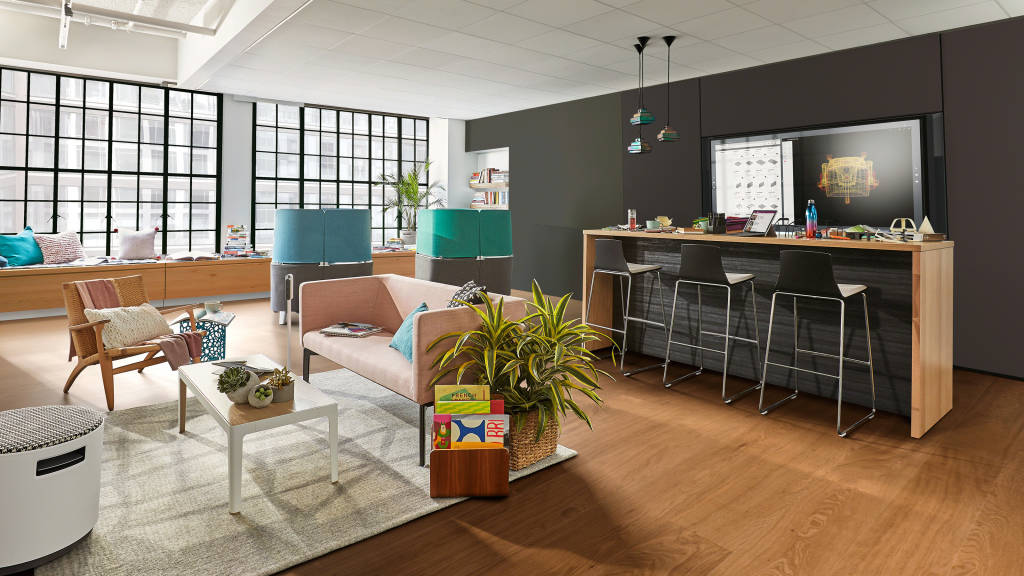
Posture:
This space supports a full range of posture—seated, standing, lounging, perching— encouraging movement without breaking flow.
Privacy:
Brody® Worklounge is a micro-environment for privacy and focus in open areas with included amenities, like integrated lighting, power and bag storage. The Brody screens create a cocoon within the open plan to sketch or take notes on your Surface Pro4 between brainstorms.
Proximity:
Centrally located in the ecosystem, this space is a communal atmo-sphere to gather and play with new ideas. It allows people to shift easily from “me” to “we” activities and different stages of the creative process.
Focus Studio
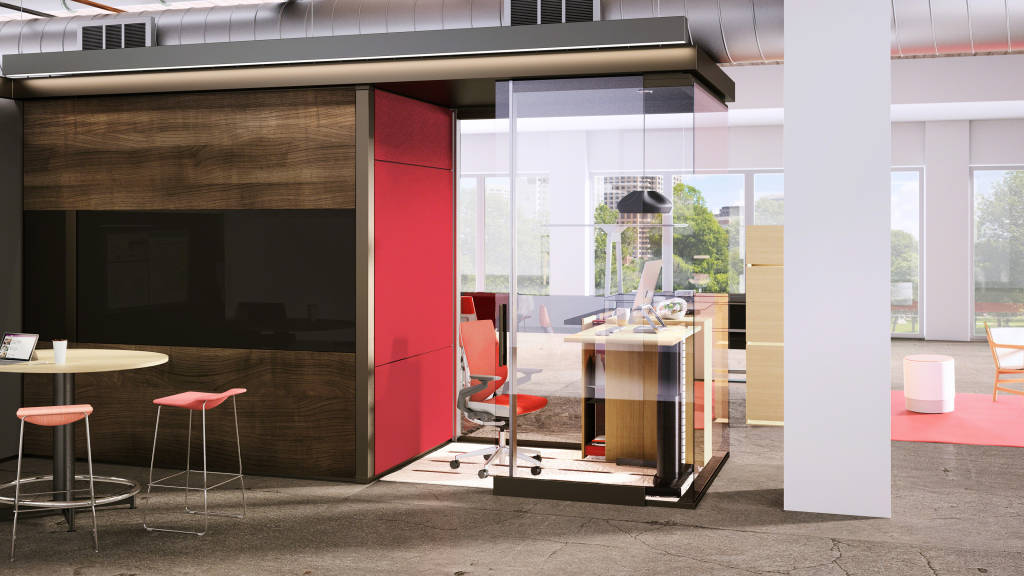
Posture:
The Gesture™ chair supports the wide range of postures people take when using the Surface Studio with Surface Dial and Surface Pen to create; The AirTouch™ table lifts with just a touch to switch quickly and effortlessly from sitting to standing to encourage movement and boost energy.
Privacy:
The space is configured to keep information private and reduce visual distraction. V.I.A.® walls keep ambient noise out so you can stay in flow.
Proximity:
The AirTouch™ table facilitates brief, shoulder-to-shoulder collaboration. Storage with integrated lighting slides open to secure your bag and become an extension of the
work area.
Ideation Hub
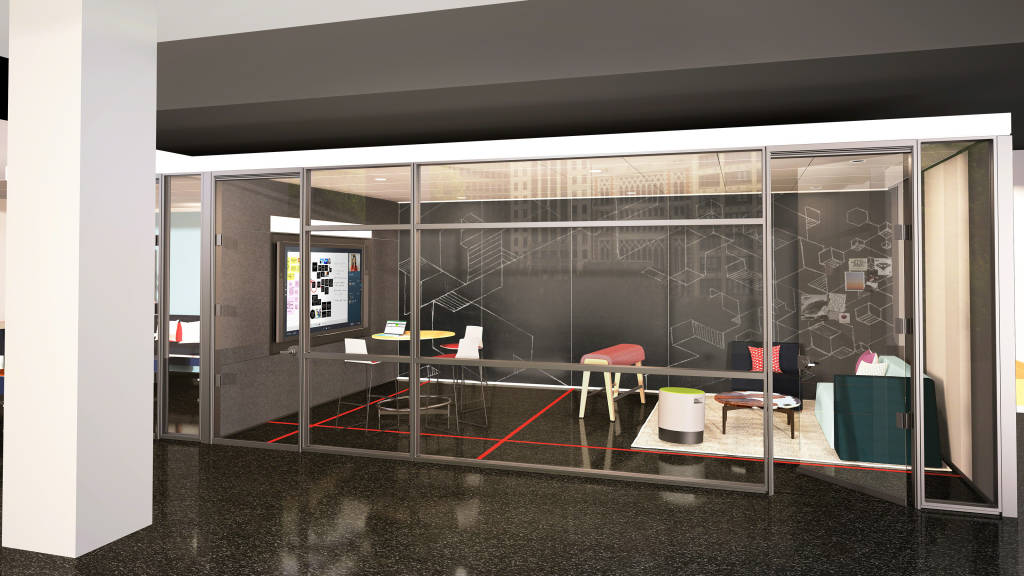
Posture:
Stool height seating encourages movement and quick shifts from interaction with personal devices to group collaboration at the Surface Hub™.
Privacy:
V.I.A.® walls integrate the Surface Hub and provide unparalleled acoustic privacy to prevent disruptions and enhance remote user participation via Skype for Business.
Proximity:
The furniture elements are scaled to allow ample circulation and the ability to engage or step back from the action and reflect or gain a different perspective.
Duo Studio
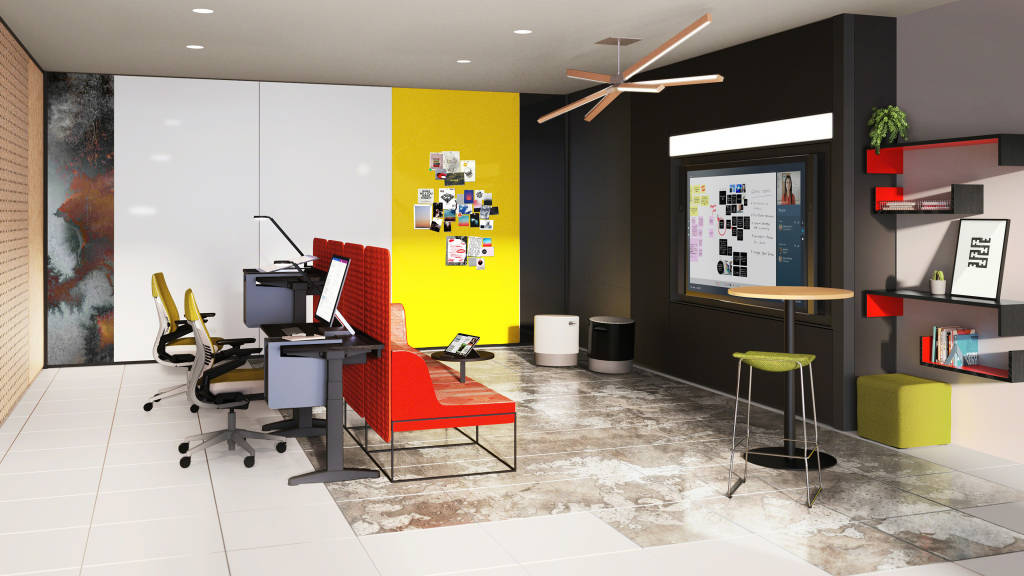
Posture:
Ology™ height adjustable tables are side-by-side, making it easy to sit or stand, work individually in parallel or lean over to collaborate, maintaining flow and consistency using Suface Dial and Surface Pen. Umami™ lounge creates a place to relax and reenergize during intense work sessions.
Privacy:
V.I.A.® walls help mitigate distractions from ambient noise and allow private conversations — in the room or with remote participants on Skype for Business —to stay that way. The “I’m Done” security feature on Surface Hub safely removes all content from the previous session to encourage rapid starts for new collaboration.
Proximity:
The configuration is an intimate environment that supports easy access to technology, storage, analog content and your teammates. It offers an informal, theater-like setting for reviewing work at the integrated Surface Hub™.
Respite Room
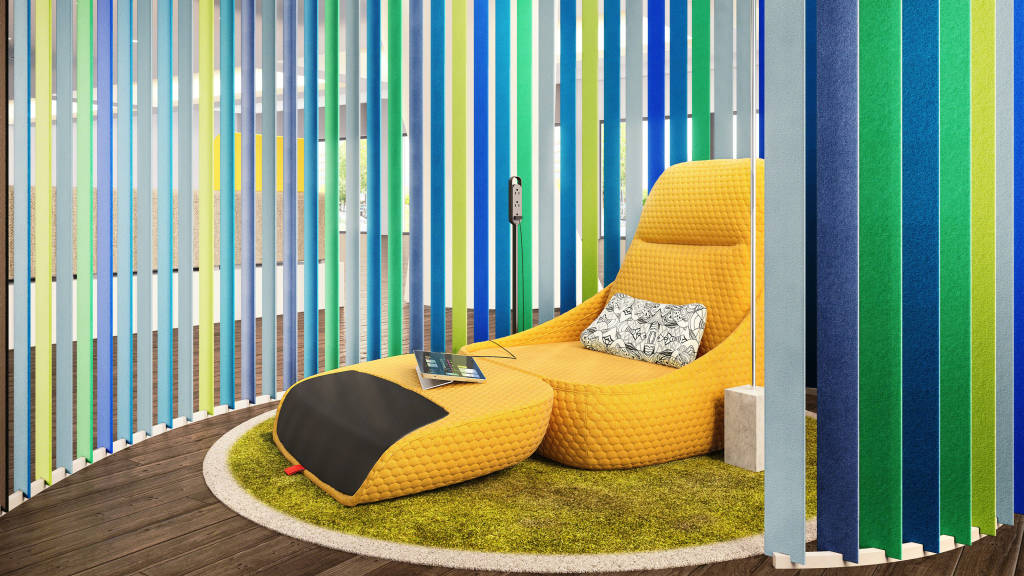
Posture:
Relaxed postures can help support diffused attention and allow the brain to wander which can lead to ‘eureka!’ insights. It also supports active brainstorming while away from your personal workstation.
Privacy:
Boundaries create visual relief reducing external stimuli, and allow the brain to rest, form new connections and access spontaneous ideas.
Proximity:
Thread™ Modular Power makes it easy to charge devices.
360 Focus
Creativity, Work and the Physical Environment
Dive deeper into our creativity research. Register to download 360 Focus immediately or have it mailed directly to you.

